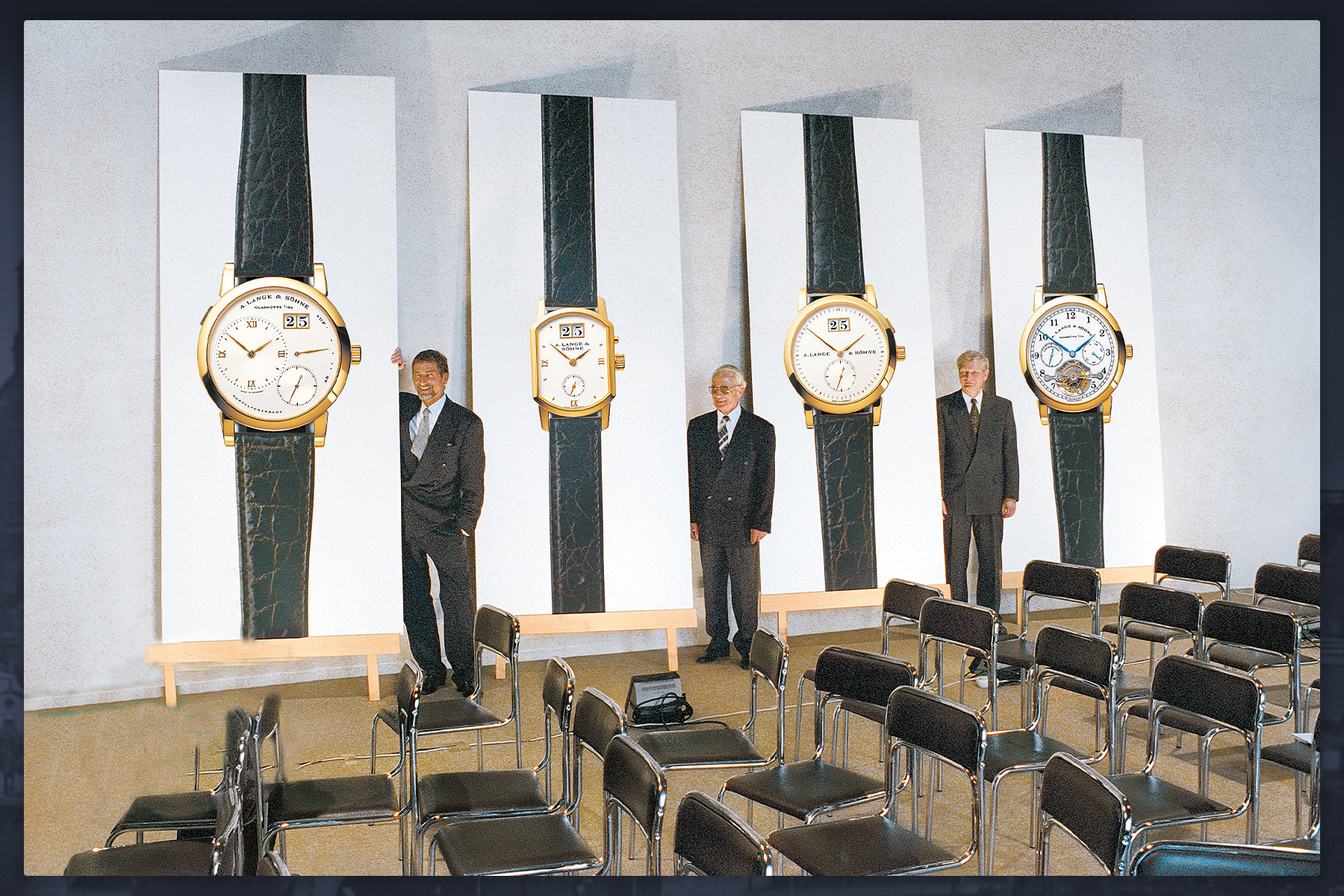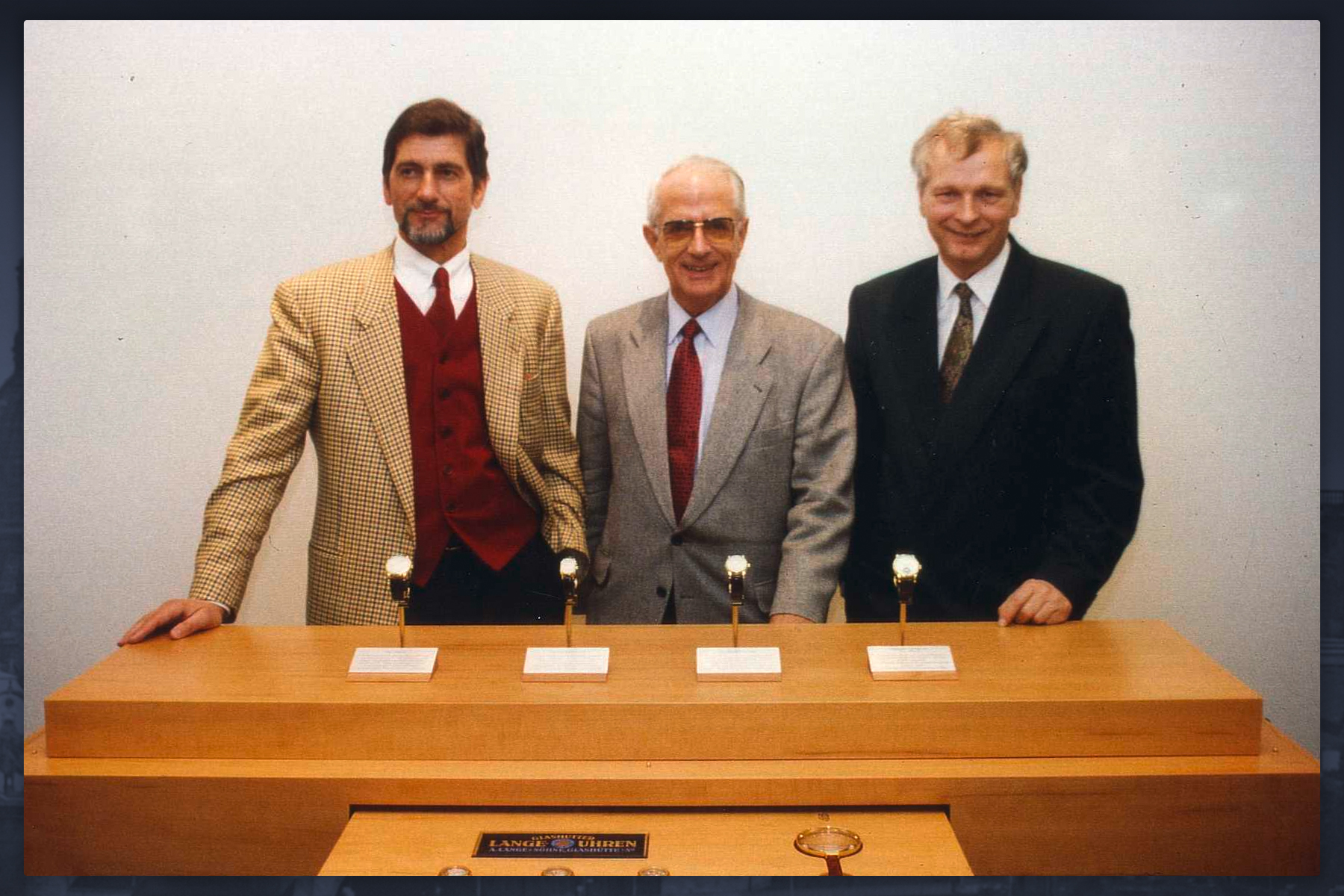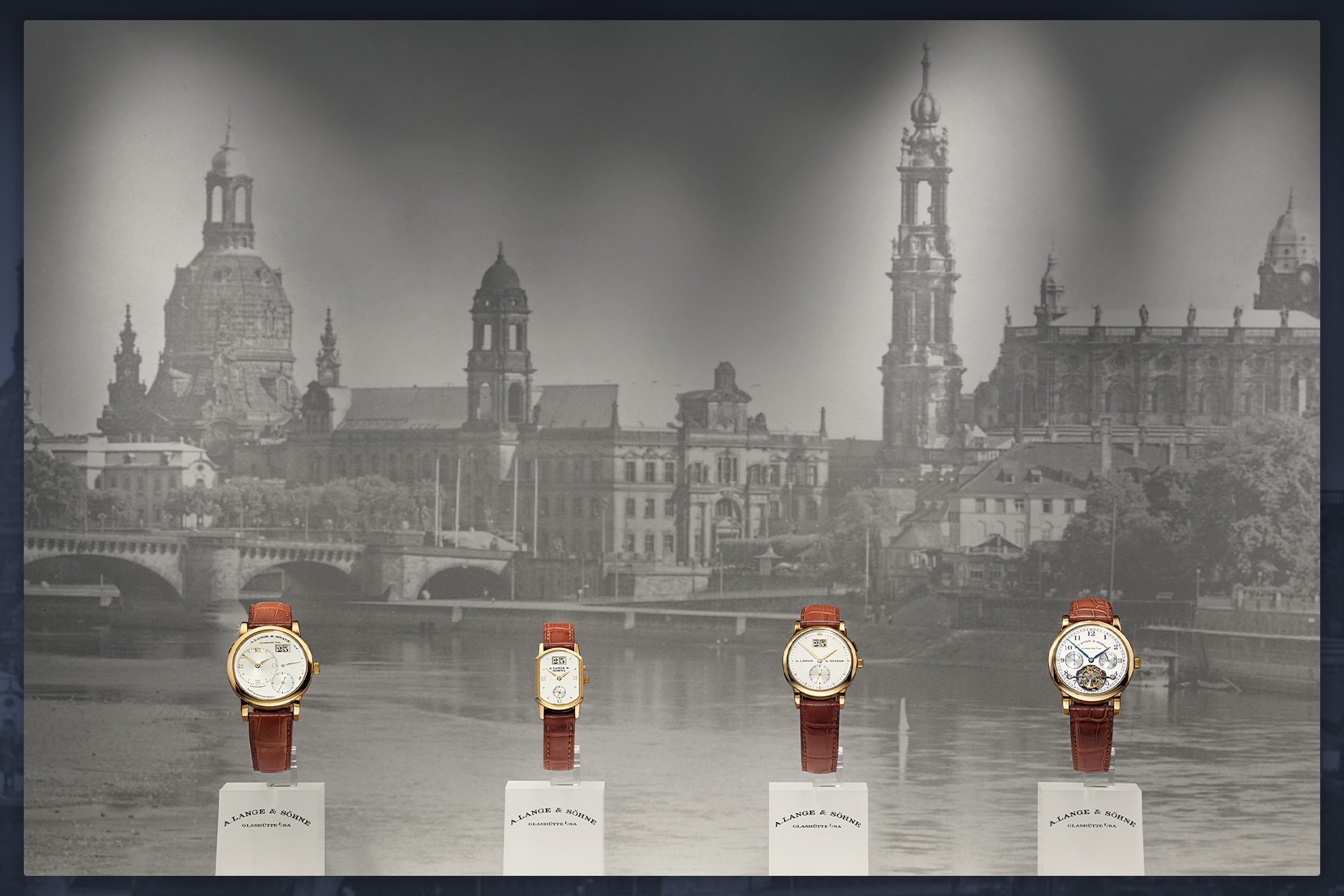Without Günter Blümlein, it’s possible that some of the watch world’s most well-respected brands wouldn’t exist today. A. Lange & Söhne pays tribute to the giant on the 20th anniversary of his death.
The fast-paced, far-reaching powers of the internet age has done wonders for the watchmaking world. It has democratised access to information about the art and engineering of horology, to high-resolution images of beautifully finished parts, and turned watchmakers, craftsmen, and even businessmen into horological heroes of a sort. To die-hard watch fans, names such as Jean-Claude Biver, Kurt Klaus, and Gerald Genta will spark immediate recognition and respect for their contributions to modern horology. And among these titans, there is another name that, while less bandied about, is no less important: Günter Blümlein.

Left: Günter Blümlein lays the foundation stone for the renovation of the Lange I building, 1993. Top right: The Lange I building before the renovation in 1993. Bottom right: The Lange I building after the renovation, image taken in 2013.
It would not be an exaggeration to say that Günter Blümlein was a true horological visionary. He played a crucial role in the survival and success of IWC and Jaeger-LeCoultre during the so-called quartz crisis in the 1970s and 80s, when brands were shuttering left and right for their inability to compete with the cheap battery-powered timepieces coming out of Japan. More significantly, however, Günter Blümlein is responsible for the resurrection and runaway success of Germany’s most famous watchmaking marque: A. Lange & Söhne. Alongside that, he also played a large part in the revival of watchmaking in Glashütte, Germany. Walter Lange, the late re-founder of A. Lange & Söhne and great-grandson of Ferdinand Adolph Lange, once said: “Without Günter Blümlein, A. Lange & Söhne would not exist anymore – and Glashütte would not have resumed its role as the centre of German precision watchmaking.” In other words, Blümlein’s place in horological history cannot be overlooked.
Born in 1943 in Nuremberg, Blümlein’s childhood was dominated by Germany’s dedication to rebuilding itself post-WWII. Nuremberg, in particular, experienced a sharp revival following the advent of industrial firms in the area — a development that perhaps led to his decision to pursue an engineering degree. His early career saw him work for the Diehl Group, where he rose to prominence as the director of marketing and sales for Junghans — it was also his first contact with the watchmaking world.
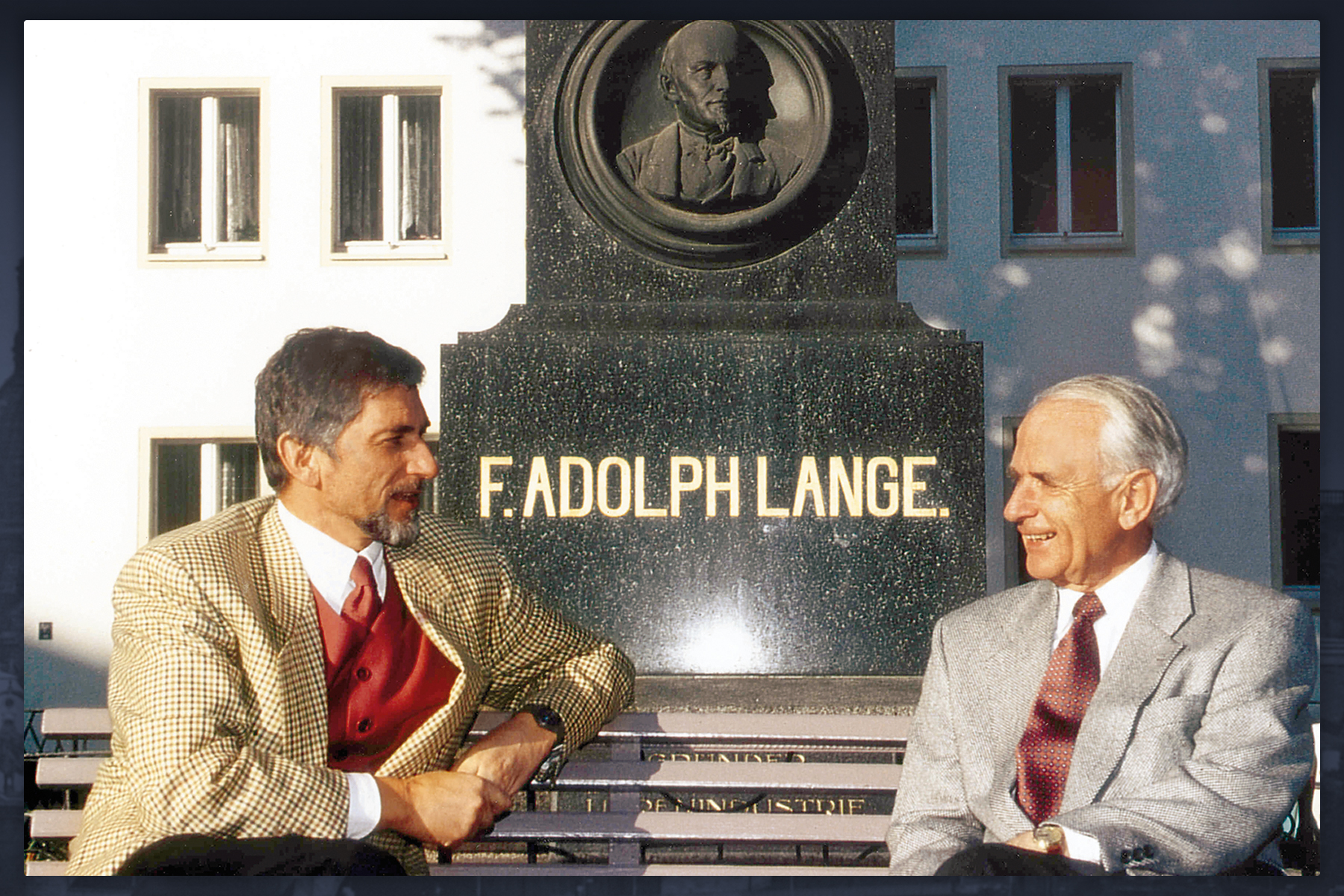
Günter Blümlein and Walter Lange in front of the Ferdinand Adolph Lange memorial, Glashütte, 1994.
His talents did not go unnoticed. Soon, he was tasked with the repositioning of IWC and Jaeger-LeCoultre, which were then owned by a VDO subsidiary called Les Manufactures Horlogères. His sharp marketing acumen was what in large part led to IWC’s infamous ‘engineered for men’ positioning, and Jaeger-LeCoultre’s focus its iconic Reverso, which enjoyed widespread popularity in the 1930s but fell largely out of favour post-WWII. Until Blümlein came along.
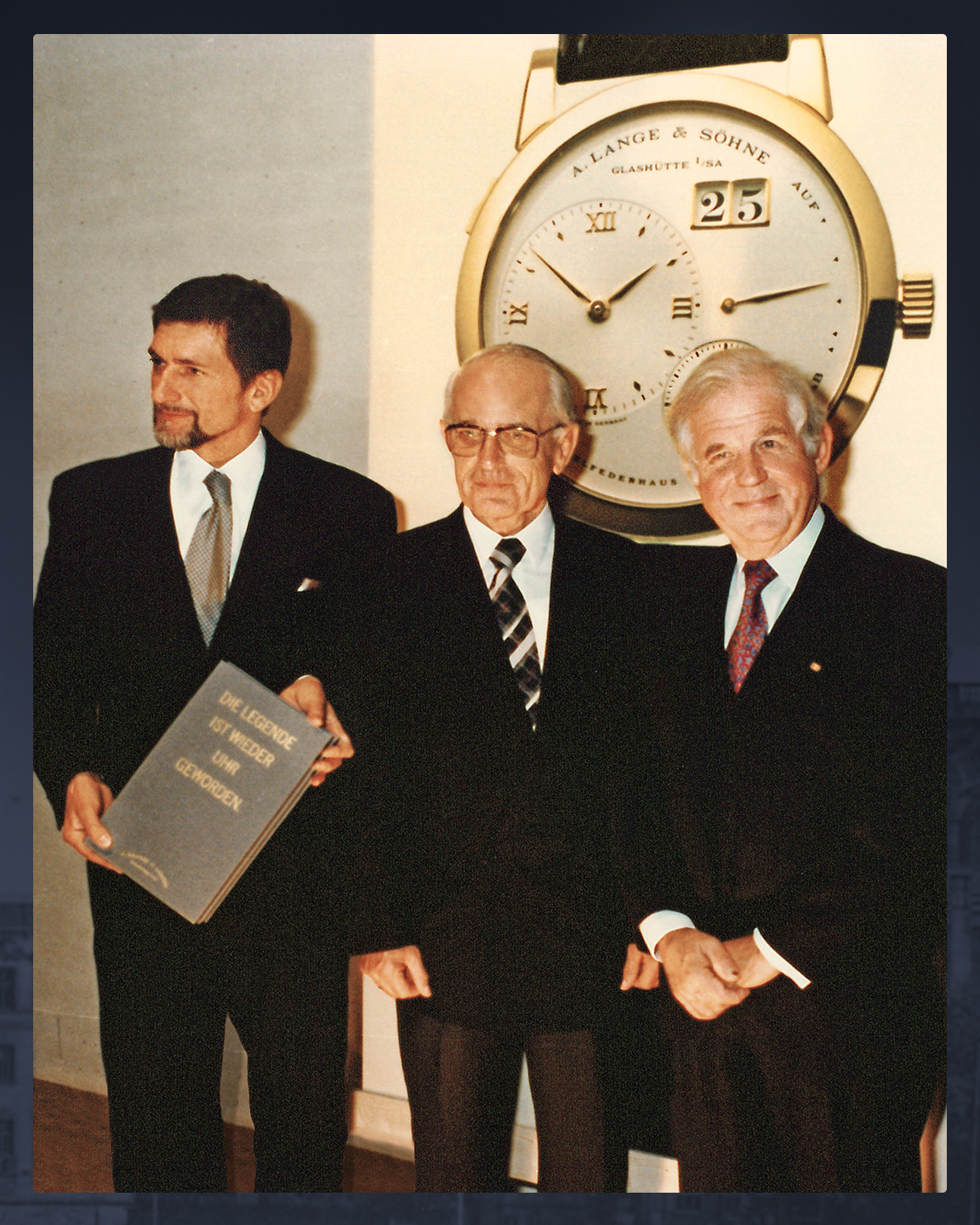
Günter Blümlein, Walter Lange and Saxon Prime Minister Kurt Biedenkopf during the first presentation at Dresden Royal Palace on 24 October 1994.
By this time, Günter Blümlein’s passion for horology had birthed a singular ambition: to revive A. Lange & Söhne, the once and future crown of German watchmaking. Together with Walter Lange, Blümlein developed the vision for the brand’s revival, touching everything from corporate strategy to product development and marketing concepts. A. Lange & Söhne’s reputation for utmost precision and dedication to details was thanks in large part to that vision. According to Blümlein, “A Lange watch is a complete work of art. It combines the watchmaker’s passion for mechanisms and craftsmanship with the inimitable style of the brand and its rich history.”
“As a newcomer, we cannot afford the slightest weakness,” he added, after the brand’s inaugural press conference on 24 October 1994. “Our products must be perfect, down to the tiniest detail.” That pursuit of perfection bore immediate fruit – all the 123 watches manufactured at that point were sold within minutes.
Blümlein’s strategic product decisions continued to deliver impressive results. The Lange 1, with its then-groundbreaking off-centre dial and outsize date, became the new face of the brand. The Tourbillon “Pour le Mérite” put Lange on the haute horlogerie map as a manufacture that could more than hold its own against more established houses. The Datograph, when it was launched in 1999, also caused quite the sensation for its unique chronograph movement.
Blümlein’s final pièce de resistance, the Double Split, was similarly laudable. Not only was it the first split-seconds chronograph to enable intermediate and comparative times of up to 30 minutes, but it was also A. Lange & Söhne’s first watch to contain a balance spring that it had developed and produced in house. The decision placed Lange among the small handful of brands capable of manufacturing its own hairsprings — in contrast to the vast majority who rely on external producers — and guaranteed that the manufacture would have the greatest possible control over its watchmaking process in the future. It would be no mean feat for any manufacture, let alone one that had just been revived a scant few years prior.
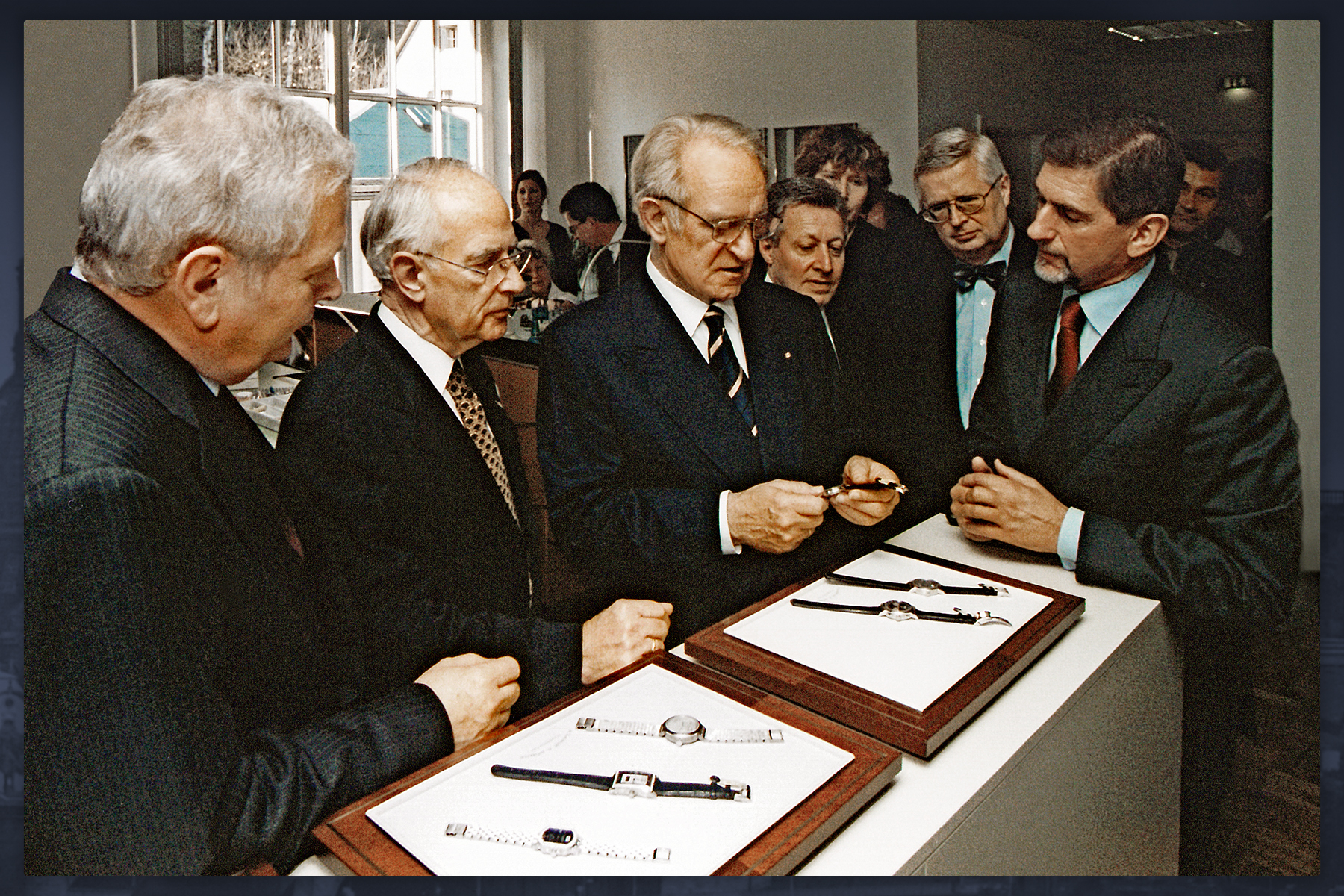
Hartmut Knothe, Walter Lange, former German Federal President Johannes Rau and Günter Blümlein at the inauguration of Lange’s new Showroom, on 7 December 2000.
Tragically, Günter Blümlein never saw the Double Split come to life. He passed away at the height of his prowess on 1 October 2001, following a short but serious illness. Although the decision to begin producing hairsprings and the Double Split were made in 1998-99, the Double Split only reached the market in 2004. While we will never know what other wonders Blümlein could have wrought for the watchmaking world, we can be certain that his legacy will never be forgotten. Without him, it’s entirely possible that three great horology houses would not exist today — and the world would be all the less without them.
Images courtesy of A. Lange & Söhne, artwork by Curatedition. All rights reserved.
Related Links:
A. Lange & Söhne: 1815 “Homage to Walter Lange”
The A. Lange & Söhne Promise of Quality Fine Watchmaking


